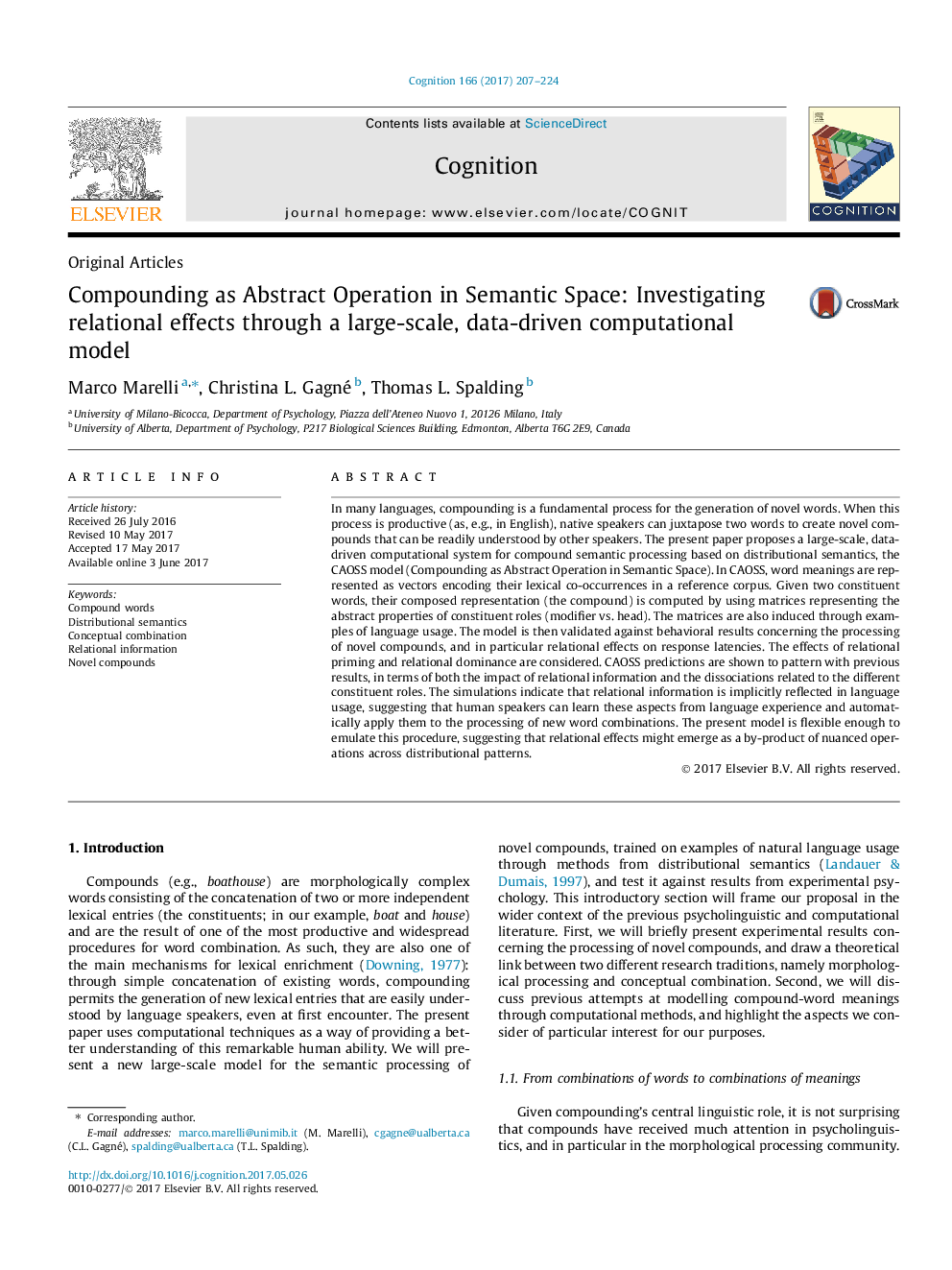| کد مقاله | کد نشریه | سال انتشار | مقاله انگلیسی | نسخه تمام متن |
|---|---|---|---|---|
| 5041555 | 1474101 | 2017 | 18 صفحه PDF | دانلود رایگان |
- Compound processing is affected by the unexpressed relation between constituents.
- A new computational model for novel compound representations is proposed.
- The model, CAOSS, is cognitively plausible, data-driven, large scale, and flexible.
- Simulations correctly predict relational effects reported in behavioral experiments.
- CAOSS architecture provides a window on the creative abilities of the human mind.
In many languages, compounding is a fundamental process for the generation of novel words. When this process is productive (as, e.g., in English), native speakers can juxtapose two words to create novel compounds that can be readily understood by other speakers. The present paper proposes a large-scale, data-driven computational system for compound semantic processing based on distributional semantics, the CAOSS model (Compounding as Abstract Operation in Semantic Space). In CAOSS, word meanings are represented as vectors encoding their lexical co-occurrences in a reference corpus. Given two constituent words, their composed representation (the compound) is computed by using matrices representing the abstract properties of constituent roles (modifier vs. head). The matrices are also induced through examples of language usage. The model is then validated against behavioral results concerning the processing of novel compounds, and in particular relational effects on response latencies. The effects of relational priming and relational dominance are considered. CAOSS predictions are shown to pattern with previous results, in terms of both the impact of relational information and the dissociations related to the different constituent roles. The simulations indicate that relational information is implicitly reflected in language usage, suggesting that human speakers can learn these aspects from language experience and automatically apply them to the processing of new word combinations. The present model is flexible enough to emulate this procedure, suggesting that relational effects might emerge as a by-product of nuanced operations across distributional patterns.
Journal: Cognition - Volume 166, September 2017, Pages 207-224
